Deck Cleaning Specialist Northern IL
Deck Cleaning Specialist Northern IL
Deck Cleaning Specialist Northern IL: Deck Maintenance and Care Checklist for Maximum Durability.
Decks make a great outdoor living space for our homes; they are spaces where we can lounge about in beautiful weather and enjoy spending time socializing with family and friends. However, to make the most of these moments, it is essential your deck is clean, beautiful, and nicely maintained. You can do the job yourself or hire a deck cleaning specialist Northern IL to do it for you regularly.
A deck can add more enjoyment to your home and backyard, as well as resale value to your home. However, owning a deck comes with its own set of responsibilities — particularly, regular maintenance.
Decks are exposed to the elements year-round. Exposure to these elements and regular general wear and tear means your deck needs to be maintained and cared for. Wood decks, in particular, are more susceptible to rot, mold, and insect infestation.
When comparing composite decking to wood, composite requires less stringent maintenance than wood since most composite deck boards have a core composed of a blend of wood and synthetics. This core is surrounded by a synthetic coating that prevents moisture and insects from creeping in and compromising the integrity of your deck. On the flip side, wood decking can be far more vulnerable to the elements and insects, as well as absorb more moisture because it is an all-natural material.
However, the lifespan of a wood deck can be extended with regular maintenance. Regular maintenance is critical to maintaining your deck’s beauty and structural integrity so you can enjoy it for years to come.
Annual deck maintenance ensures your deck lasts as long as possible, looks beautiful, and is protected from the elements. Without proper cleaning and maintenance, your deck boards can fade and deteriorate.
Furthermore, your deck can also become susceptible to rot, mildew, and termites. A well-maintained deck allows you to preserve the value of your deck and enjoy your outdoor space for dining, entertaining, and relaxing.
Now, with that in mind, here are some wood deck maintenance tips to help keep your deck in good shape for many years to come.
-
Clean the Deck and Clear Any Debris
All decks require thorough cleaning, even composite decking. Regularly cleaning your deck and making sure it is free from any clutter or debris will not only keep your deck in good condition but will also help make your deck a safer space to relax and enjoy.
Cleaning your deck regularly helps prevent the growth of mold or mildew that can lead to rot if left unchecked.
Here are some deck cleaning and maintenance tips to follow:
- Schedule regular cleaning – Good deck maintenance means sticking to a regular schedule. Give your deck a thorough cleaning at least once or twice each year. Cleaning your deck in early spring is a great way to prepare your deck for summer BBQs or warmer weather gatherings. Hiring an experienced deck cleaning specialist Northern IL is recommended because it will ensure that cleaning is done regularly and professionally without causing any damage to your deck.
- Thoroughly clean your deck with an appropriate cleaning agent – Choosing the right cleaning solution is important to maintaining your deck. You don’t want to use something that is too abrasive or that will cause damage.
- Regularly sweep your deck – Treat your deck as you would any room in your home. Sweep your deck clean once a week or every two weeks to be sure dirt and debris aren’t clinging to its surface.
- Remove any debris stuck between deck boards – In addition to sweeping your deck on a regular basis, you should also check between deck boards to be sure no debris has gotten lodged in those crevices. Damp or rotting leaves that are stuck between deck boards can also promote mold and mildew in these spaces. You can use a putty knife to get in between the boards to safely remove debris.
- Remove leaves and debris – Leaves and other debris (including trash, such as used napkins or plastic bags that may have blown onto your deck) should be regularly swept and removed from the surface of your deck. Not only can these items create a slip-and-fall hazard, but, if they become saturated with water or moisture, can also lead to mold or mildew on your deck.
-
Check for Decaying and Rotting Wood
Maintaining the structural integrity of your wood or pressure-treated wood deck is important to getting decades of safe use from it. The North American Deck and Railing Association (NADRA) recommends examining your deck at least once per year for any decaying or rotting wood.
When examining your deck, carefully and thoroughly inspect all areas, surfaces, and joists.
Here is a quick deck maintenance DIY checklist of best practices for conducting your annual inspection:
- Check joists and support posts for decay – Joists and support posts are critical to the structural integrity of your deck. Not only should you check your joists and support posts for signs of rot, but you should regularly engage in good preventive maintenance to guard joists against rot. When you work with a deck cleaning specialist Northern IL with vast experience with different types of decks, you will get advice on preventative deck maintenance.
- Check the ledger board – This is the board that connects your deck to your house or another anchoring structure for your deck. The ledger board is one of the most common areas where decks see their first instances of rot. Improper flashing of ledger boards can be a key factor in encouraging rot. Flashing your ledger boards can help create a barrier against moisture and precipitation. Another reason ledger boards may be more susceptible to rot is that the board was constructed with lumber that was not decay-resistant.
- Check deck boards – Check the surface of your deck for any signs of decay or infestation, or for any boards where the wood may have begun to split. Look at each individual deck board and be sure boards aren’t loose or that they don’t have small holes or feel soft. Loose boards should be tightened, while split or rotting boards should be replaced. If possible, also look at the underside of your deck board for rot and/or pest infestation, as well. In addition, make sure deck boards have proper gapping to allow for drainage and airflow.
How to Check Your Deck for Rot
- Use a screwdriver – You can use a screwdriver to check your deck to see if the wood is easily penetrated or feels soft. This could be one of the signs of dry rot.
- Look for signs of infestation – In addition to poking your deck with a screwdriver to uncover any potentially rotted areas, you should also carefully examine your deck for small holes. These tiny holes can be signs of insect infestation or indicators that termites or other pests may have burrowed their way into the wood.
-
Make Sure Fasteners, Stairs, and Railings are Secure
In terms of deck care and maintenance tips, you should regularly check the integrity of fasteners on your deck, such as nails, screws, or anchors. Checking fastenings is particularly important to ensure your deck and railings aren’t wobbly.
One of the most important areas to check to be sure fasteners are secure is your ledger board, which connects your deck to a standing wall of a house or other structure. If your fasteners are not secure, this can cause your deck to pull away from a standing structure and risk collapse.
Here is a brief checklist of areas to inspect to be sure your deck’s fasteners are secure:
- Stairs and railings – Inspect your stairs and railings to be sure they are both tightly secured and free from any signs of rot or decay.
- Ledger board – Check that your ledger board is securely fastened to a standing structure.
- Stair risers and stringers – Examine your stair risers and stringers as you are inspecting your stairs and railings. Check for any loose fasteners and that your stairs feel stable and secure.
- Check fasteners, nails, and screws for rust – Check for corrosion or rust on any fasteners. Take inventory of any rusty nails or fasteners and replace them with new ones. If you live in a saltwater environment, use stainless steel fasteners.
- Check for stray nails or loose screws – Examine your deck boards for any loose screws or nails that are sticking up. This can pose a hazard and cause people to trip on your deck or may mean that your deck boards may be loose. Hammer these nails down and/or replace any loose screws that may have worn treads.
-
Stain and Seal a Pressure-Treated Wood Deck
Staining or sealing your wooden deck is an important facet of deck maintenance that should be done once every year to prevent rot and decay. There are a few key differences between staining and sealing a deck. This is where the expertise of an experienced deck cleaning specialist Northern IL comes in handy. You have got to do it right!
A sealer is a clear, water-resistant coating that can be applied to a wood deck. When dried, it forms a “seal” between your deck and the elements, protecting it from moisture that could lead to rot.
A deck stain is a solution that has a tint or pigment to enhance or change the color of a wood deck. While many modern deck stains are formulated to be water-resistant, it is important to check the label to be sure that a deck stain is also a sealant.
If your deck stain formula doesn’t have a protective sealant included, you’ll want to finish your deck with an added coat of sealer. Not only will this prevent the stain from wearing away in high-traffic areas and giving your deck an uneven finish, but more importantly, it’ll add an extra element of water resistance to your deck, safeguarding it from moisture.
When applying a sealant or stain, it is important to do so when weather conditions are optimal. Check your weather forecast in advance to be sure you’ll have a period of dry weather when staining and sealing your deck. Rain or precipitation can ruin your hard work!
Here is a brief checklist of tips to follow when staining and sealing your deck. (Remember to also always read the stain and sealer manufacturer’s requirements for additional information before staining and/or sealing your deck.):
- Wait 48 hours for your deck to dry after cleaning – If you have given your deck a thorough cleaning or washing, be sure your deck has had ample time to dry before applying stain or sealer. Typically, you will want to wait 48 hours for your deck to fully dry after cleaning. However, if your deck sits in a shady portion of the yard and doesn’t receive much sunlight, you may want to wait an additional 24 hours before applying your stain or sealer.
- Sand your deck – This step is optional but recommended if you have not sanded your deck in a while and there are multiple layers of sealer or stain that have built up on the surface of your deck. To help your stain or sealer better adhere to your deck, you will want to sand it first. Sanding your deck removes any old outer layers of stain or sealer, as well as smooths down any wood splinters. Use 80-grit sandpaper to sand your deck surface. You can use a pole sander to make this easier and avoid having to sand on your hands and knees. A deck cleaning specialist Northern IL can also do this for you if you choose a package that includes such a service.
- Check the weather – Look at the weather forecast to be sure you have a period of dry weather so you can safely apply your stain or sealer. Temperatures between 50 and 90 F are optimal for making sure your stain and seal adhere properly.
- Remove plants or furnishings from your deck and cover them with plastic – If you have any furniture, potted plants, or other items on your deck, remove them before staining. Stain or sealer can damage foliage or furnishing, so be sure to cover them, as well as any surrounding grass or shrubs, with sheets of plastic, tarps, or trash bags. If you have an elevated deck, covering the ground beneath it with a tarp can prevent stain or sealer from leaking onto your grass or any items you are temporarily storing beneath your deck while staining.
- Apply stain or sealer to a clean deck – After sanding your deck, be sure to sweep away the dust and grit. You can either sweep it or use a blower to clear away the dust. (Don’t use a hose to rinse away the dust! Your deck will need to be dry to apply stain or sealer.) Be sure your deck has been cleaned before applying any stain or sealer. Not only will this help your stain or sealer adhere to your deck, but you won’t be “sealing” in any dirt or debris.
Note: If the stain you plan to use doesn’t have a built-in sealer, you’ll want to stain your deck first, then wait until your stain has dried before applying sealer. A stain needs time to cure, so give yourself at least a full day before applying sealer or moving furnishings back onto your deck. If you need to apply a sealer on top of your stain, wait approximately 24 hours before applying the sealer on top of your stain. Then, wait an additional 24-48 hours for your sealer to dry before walking on your deck.
Maintenance of A Pressure-Treated Wood Deck
Maintaining a pressure-treated wood deck requires similar levels of diligent care and maintenance on a regular schedule as you would with any other type of wood deck.
Pressure-treated wood has undergone a process that compacts water and preservatives into the wood to help make it more resistant to moisture, rot, and insects. Because of this process, pressure-treated lumber sometimes feels wet when purchased in stores. However, the water evaporates, leaving those preservatives behind to react with the wood, extending its lifespan and endowing it with properties that repel insects and moisture.
Despite this unique process, pressure-treated wood should be given the same amount of regular care, cleaning, and maintenance as other types of wood decks, ranging from pine to cedar to redwood. Using a quality sealant is a critical part of treated lumber deck maintenance. Like any type of wood deck, adding a coat of sealant to a pressure-treated wood deck will offer added protection against moisture.
Regardless of the type of wood deck you choose, committing to a regular schedule of maintenance and upkeep can give you years of enjoyment from your deck. Following these tips and checklists can help make it easier to keep track of your annual and seasonal deck maintenance routines.
DIY vs. Hire a Pro
Taking the time to wash and clean, repair, and sand and seal your deck annually will quickly have it looking like new, making it a great space for you to spend time year-round and protecting your investment for the long term.
You can handle annual deck maintenance yourself with a free weekend and a few simple tools. However, refinishing a deck involves more time and some specialty tools, such as an orbital sander.
You can hire a deck cleaning specialist Northern IL to cross deck maintenance off your to-do list. Cleaning typically costs anywhere from $30 to $60 an hour, depending on where you live and the condition of your deck. Deck refinishing costs anywhere from $600 to $1,360 on average.
Deck Cleaning Specialist Northern IL
If you’re looking for a professional company to help you with your deck maintenance and care, contact RPW ProWash. When you choose to work with us, we guarantee you high-quality service that ensures value for your hard-earned money!
Call us today at (779) 348-3135 or contact us online to ask any questions and/or get a FREE, no-obligation estimate. We are here for you.



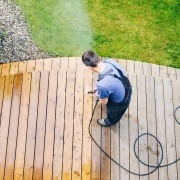
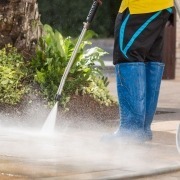
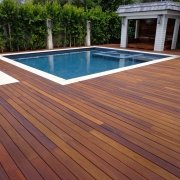
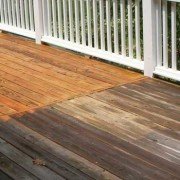


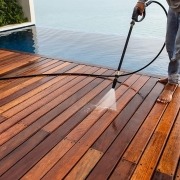


Leave a Reply
Want to join the discussion?Feel free to contribute!